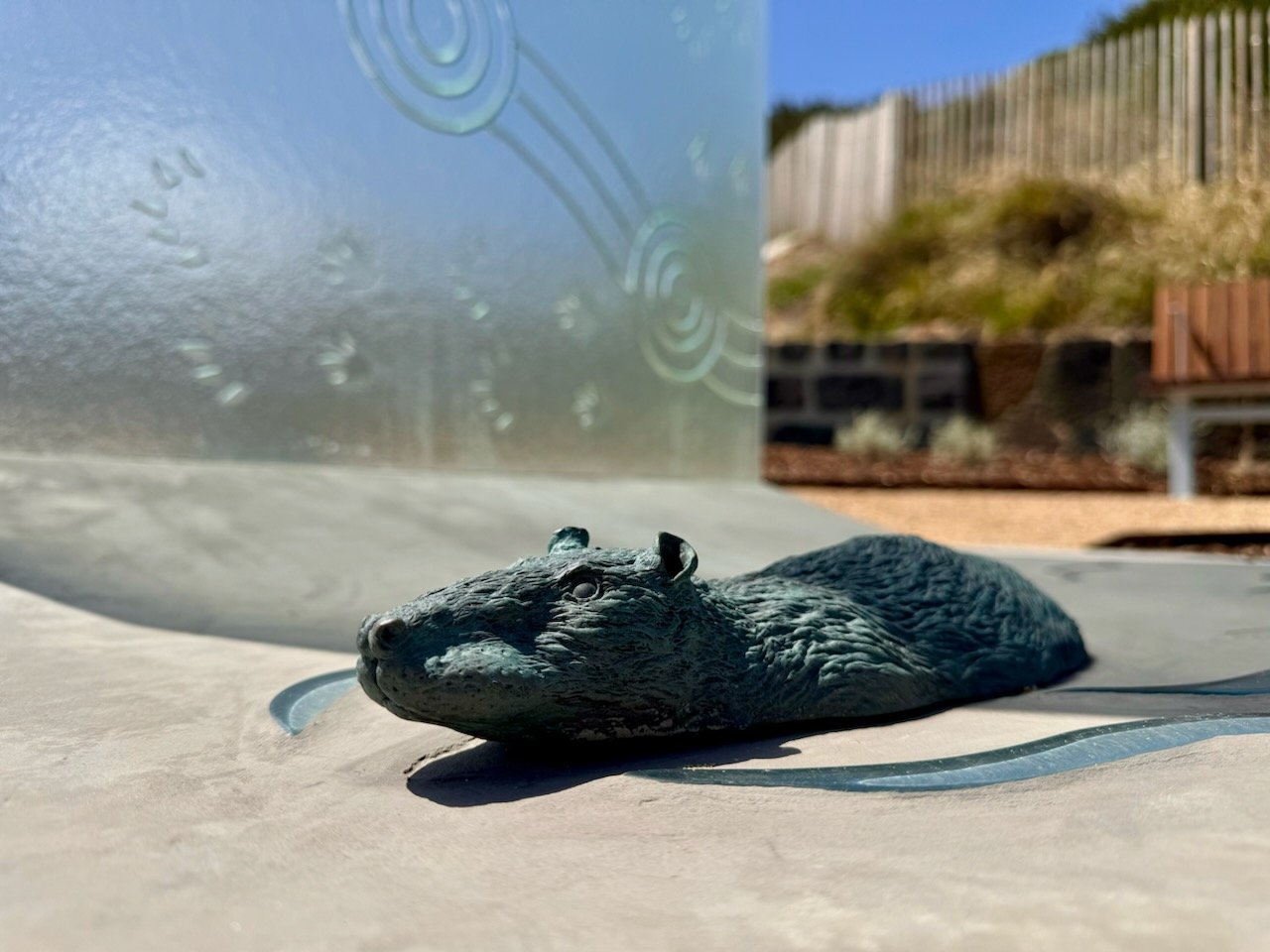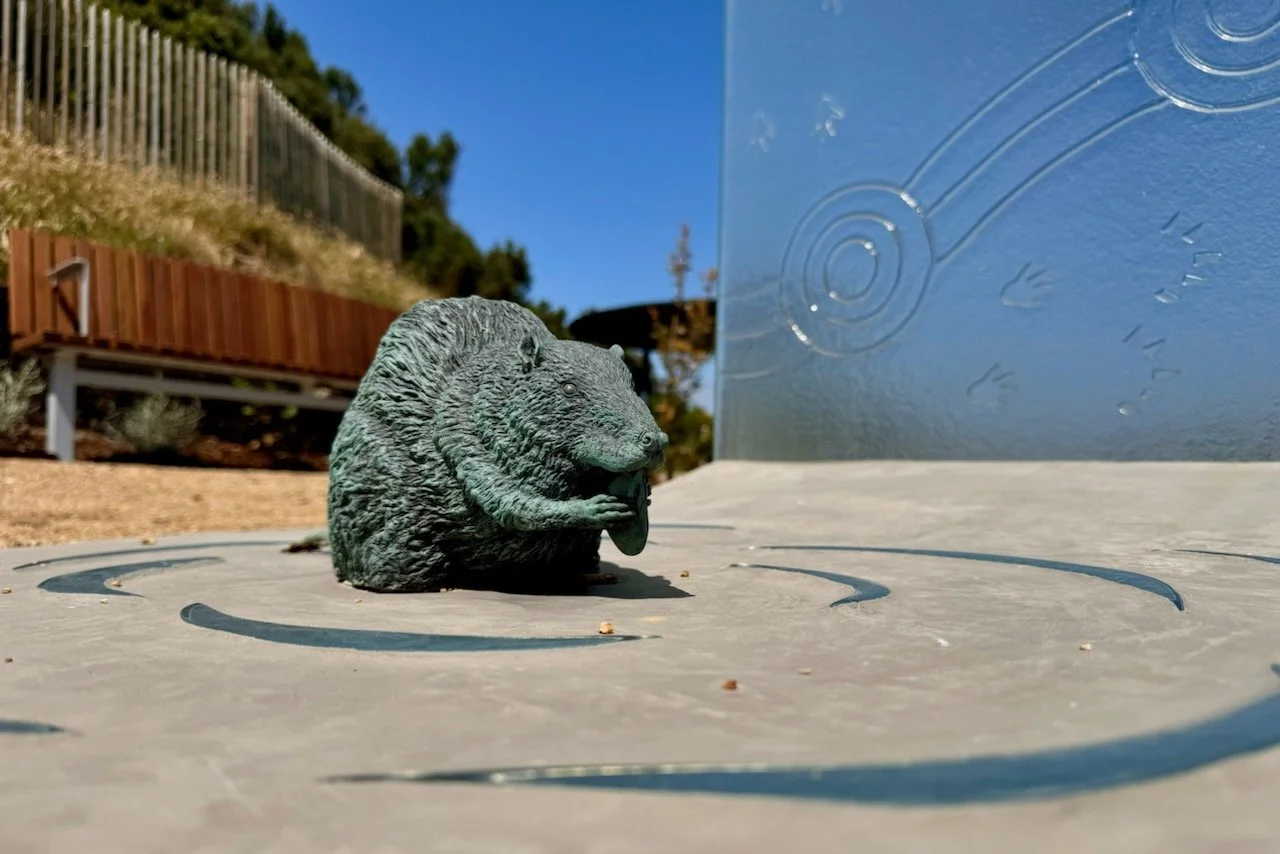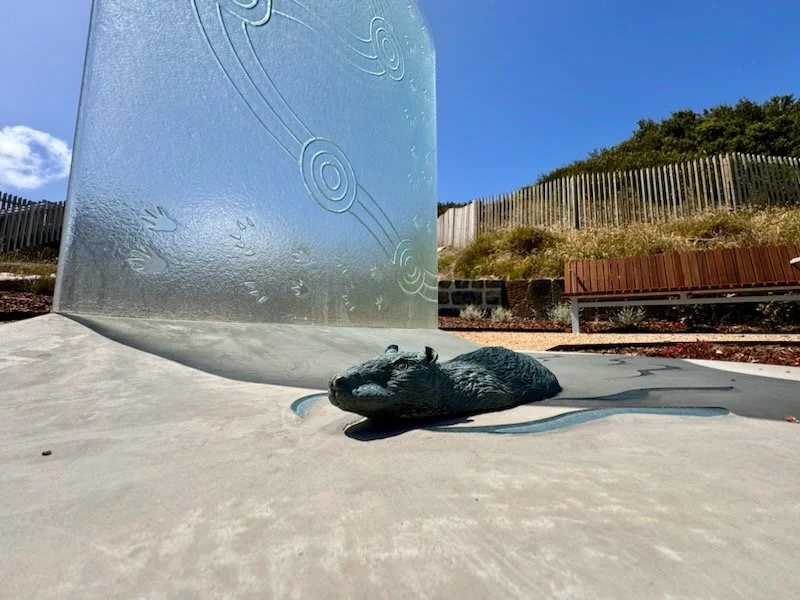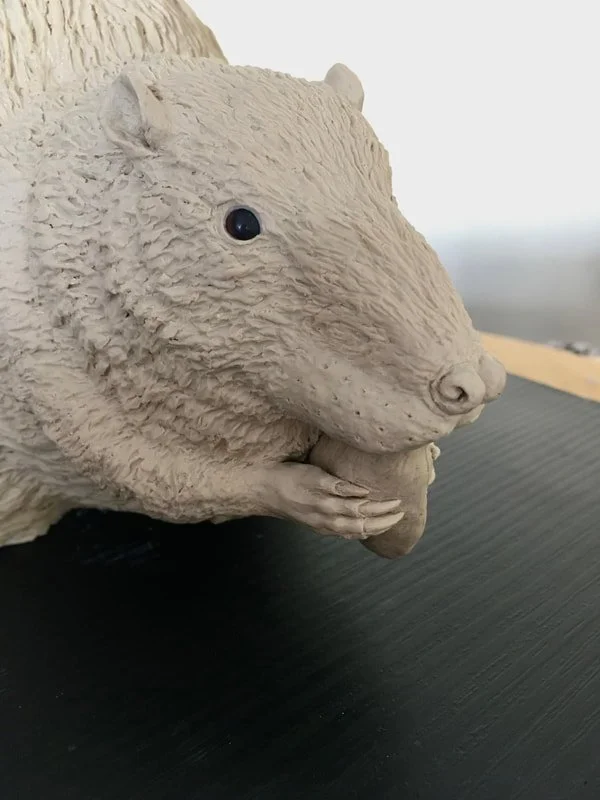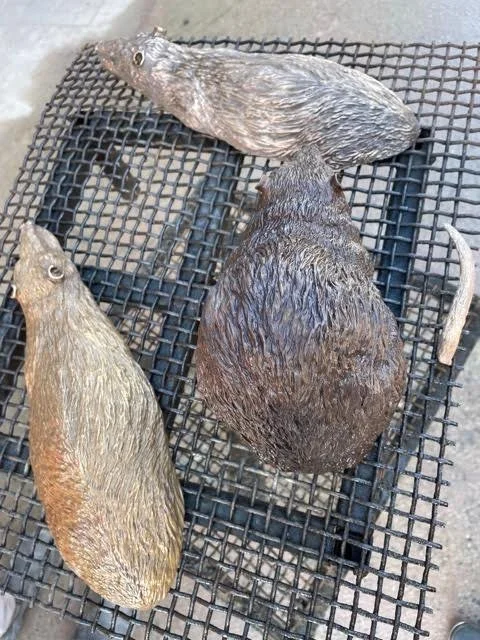Baanj dayang
Baanj dayang captures the essence of this playful rakali, an intelligent animal that is resourceful and an excellent swimmer. To Chris and Aunty Kim, rakalis symbolise resilience, playfulness and fun as it emerges from the water to chase its companion, resilience in face of threat and danger, adaptability as it navigates both fresh and saltwater habitats, and the vital role that a peak predator plays in stabilising ecological systems. The rakali, which means 'water mouse with golden belly', is a large semi-aquatic rodent living between freshwater and saltwater, linking the two aquatic environments and symbolising their interconnectivity.
As a highly intelligent apex predator, their role in the environment is similar to that of otters, feeding on crabs, shellfish and other invertebrates. Rakali are one of Australia's largest rodents, characterised by webbed hind feet, white tip on tail, long blunt nose and thick waterproof fur and a tail that acts as a rudder when swimming.
This species was heavily hunted for its pelt until protective legislation was introduced. The main threats to the rakali now are habitat alteration, swamp drainage and predation by introduced animals such as cats and foxes.
Rakali play a vital ecological role in controlling introduced pests like black rats and in other parts of Australia, cane toads. The rakali features in the Wurundjeri creation story about how the platypus was created. In the story, the rakali and duck fell in love and eloped. Their children were born as dulai wurrung (the platypus).
Title: Baanj dayang
Location: Mentone Life Saving Club.
Client: Kingston City Council
Team: Concept development, design, cultural research by Aunty Kim Wandin and Chris Joy. Technical coordination by James Voller. Plasticine modelling by Natalie Ryan. Rakali sketch by Amanda Wright. Photography by Cecile Vandenberg. Glasswork by Wathaurong Glass. Installation by Eric Holmes.


